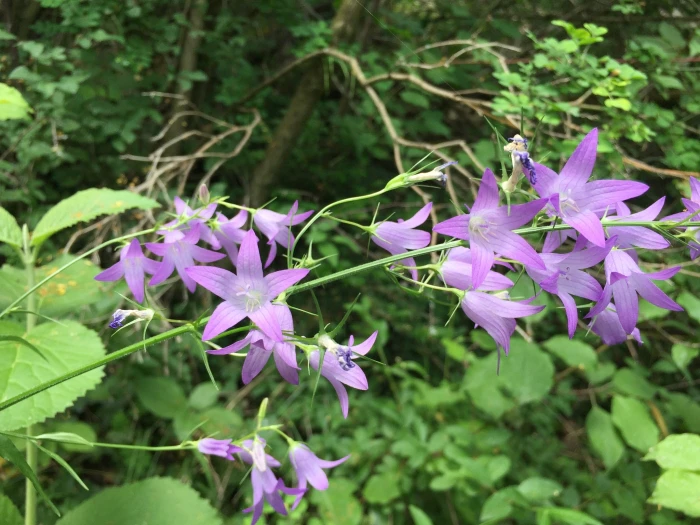Rampion Bellflower
(Campanula rapunculus)
Rampion Bellflower (Campanula rapunculus)
/
/

Jason Grant
CC BY 4.0






















Estimated Native Range
Climate Requirements
| • Precipitation | 27" - 33" |
| • High Temp. | 72°F - 83°F |
| • Low Temp. | 27°F - 37°F |
Summary
Rampion bellflower is valued for its historical culinary use, with both leaves and roots being edible. It is also appreciated for its ornamental qualities in cottage gardens and wildflower meadows. In cultivation, it requires well-drained, rich sandy-loam soils and can tolerate partial shade, though it prefers full sun. While it is winter-hardy, it benefits from mulching in colder climates. This plant is relatively low-maintenance but can be susceptible to slugs and snails. It is not typically associated with aggressive roots or serious diseases. Rampion bellflower can self-seed under optimal conditions, which should be monitored to prevent unwanted spread.CC BY-SA 4.0
Plant Description
- Plant Type: Herb
- Height: 1-3 feet
- Width: 0.5-1.5 feet
- Growth Rate: Moderate
- Flower Color: Blue, Purple
- Flowering Season: Spring, Summer, Fall
- Leaf Retention: Deciduous
Growth Requirements
- Sun: Full Sun
- Water: Medium
- Drainage: Fast, Medium
Common Uses
Bee Garden, Border Plant, Butterfly Garden, Edible*Disclaimer: Easyscape's listed plant edibility is for informational use. Always verify the safety and proper identification of any plant before consumption., Low Maintenance
Natural Habitat
Open woodlands, grassy slopes, and rocky areas in calcareous soils
Other Names
Common Names: Rapunzel, Rover Bellflower
Scientific Names: Campanula rapunculus, Campanula esculenta, Campanula lusitanica f. bracteosa, Campanula lusitanica f. racemoso-paniculata, Campanula lusitanica f. verruculosa, Campanula lusitanica var. cymoso-spicata, Campanula patula var. rapunculus, Campanula racemosa var. paniculiformis, Campanula rapunculus subsp. verruculosa
GBIF Accepted Name: Campanula rapunculus